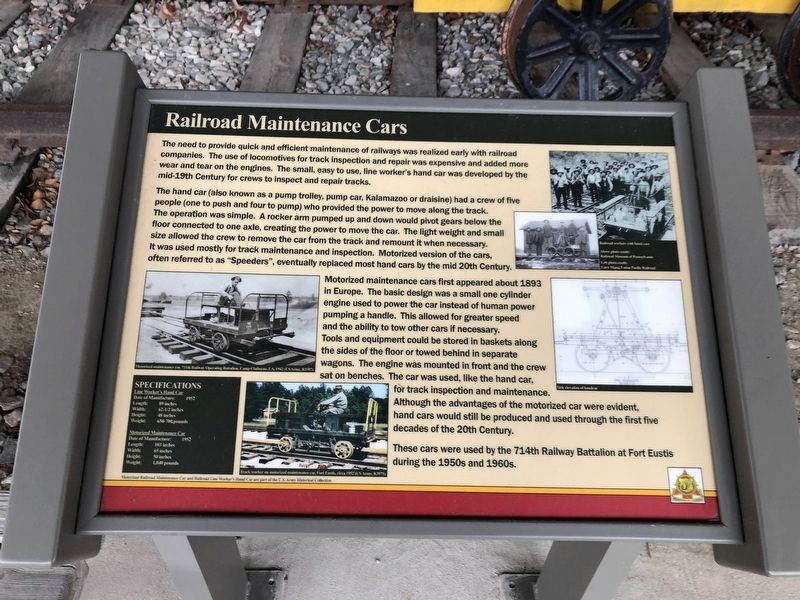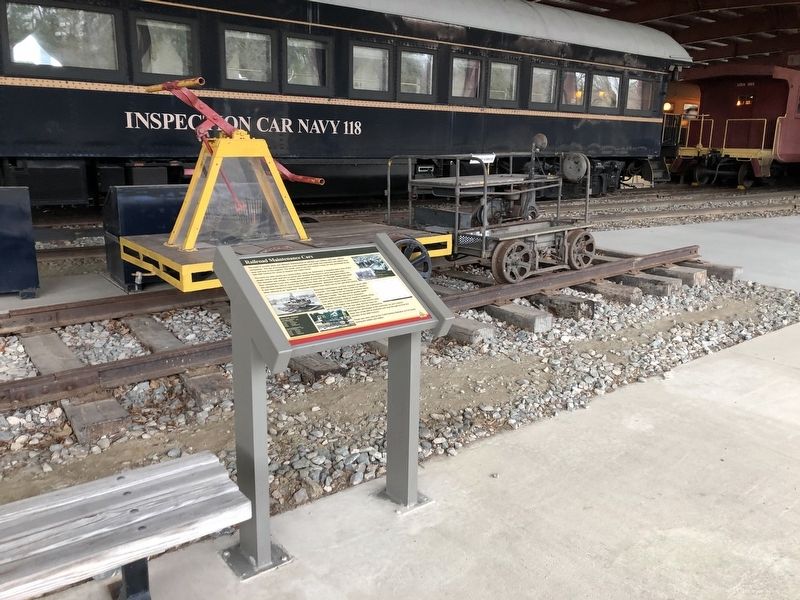Railroad Maintenance Cars
The need to provide quick and efficient maintenance of railways was realized early with railroad companies. The use of locomotives for track inspection and repair was expensive and added more wear and tear on the engines. The small, easy to use, line worker's hand car was developed by the mid-19th Century for crews to inspect and repair tracks.
The hand car (also known as a pump trolley, pump car, Kalamazoo, or draisine) had a crew of five people (one to push and four to pump) who provided the power to move along the track. The operation was simple. A rocker arm pumped up and down would pivot gears below the floor connected to one axle, creating the power to move the car. The light weight and small size allowed the crew to remove the car from the track and remount it when necessary. It was used mostly for track maintenance and inspection. Motorized version of the cars, often referred to as "Speeders", eventually replaced most hand cars by the mid 20th Century.
Motorized maintenance cars first appeared about 1893 in Europe. The basic design was a small one cylinder engine used to power the car instead of human power pumping a handle. This allowed for greater speed and the ability to tow other cars if necessary. Tools and equipment could be stored in baskets along the sides of the floor or towed behind in separate wagons.
The engine was mounted in front and the crew sat on benches. The car was used, like the hand car, for track inspection and maintenance. Although the advantages of the motorized car were evident, hand cars would still be produced and used through the first five decades of the 20th Century.
These cars were used by the 714th Railway Battalion at Fort Eustis during the 1950s and 1960s.
Erected by US Army Transportation Museum.
Topics. This historical marker is listed in these topic lists: Forts and Castles • Railroads & Streetcars • War, Cold. A significant historical year for this entry is 1893.
Location. 37° 10.015′ N, 76° 34.472′ W. Marker is in Newport News, Virginia. It is in Fort Eustis. Marker can be reached from Washington Boulevard just south of Madison Avenue, on the right when traveling north. Touch for map. Marker is at or near this postal address: 300 Washington Blvd, Fort Eustis VA 23604, United States of America. Touch for directions.
Other nearby markers. At least 8 other markers are within walking distance of this marker. Model 666, Truck, Prime Mover, 6 Ton, 6×6 (here, next to this marker); 0-6-0T Side-Tank Switcher (a few steps from this marker); Railway Snowplow - Spreader - Ditcher Car (a few steps from this marker); Railway Training Caboose (a few steps from this marker); Berlin Duty Train - Guard Car (within
Credits. This page was last revised on February 1, 2023. It was originally submitted on February 27, 2021, by Devry Becker Jones of Washington, District of Columbia. This page has been viewed 262 times since then and 35 times this year. Photos: 1, 2. submitted on February 27, 2021, by Devry Becker Jones of Washington, District of Columbia.

